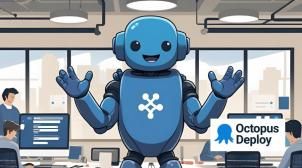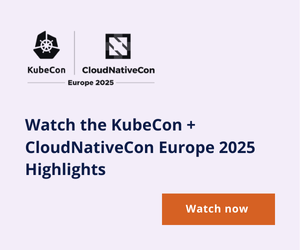-
Claude AI Exploited in Global Influence Campaign Using 100+ Fake Political Personas
A recent investigation reveals Claude AI was misused to manage over 100 fake personas in a covert political influence operation spanning multiple countries and platforms.
-
NVIDIA Unveils DOCA Argus at RSAC 2025 to Boost AI Security
NVIDIA launches DOCA Argus at RSAC 2025, real-time threat detection and runtime protection for AI workloads with isolated DPU-based security.
-
Is Real-time Adaptive Security the Future of Data Integrity and Security
Explore how real-time adaptive security, powered by AI and machine learning, is shaping the future of data integrity and cybersecurity.
-
Introducing the Anaconda Community Channel: Expanding Your Open Source Arsenal While Maintaining Enterprise Control
Introducing the Anaconda Community Channel – Unlock access to over 16,000 additional open-source packages with the new Community Channel in the Anaconda AI Platform. Designed for enterprises, it offers seamless compatibility with Anaconda’s trusted distribution, all while maintaining governance, security, and compliance. Empower developers, reduce admin overhead, and accelerate innovation—without compromising control. Now available for Business tier customers.
-
The Shadow AI Crisis: Why Enterprise Governance Can’t Wait Any Longer
The Shadow AI Crisis: Why Enterprise Governance Can’t Wait – With over 70% of AI use happening outside IT’s control, shadow AI is creating massive security, compliance, and visibility risks. As unofficial tools proliferate, the need for enterprise-ready governance is urgent. Learn how forward-thinking organizations are turning this underground trend into a competitive advantage with smarter platforms, embedded security, and real-time oversight.
-
Zscaler to Transform AI-Driven Security Operations with Red Canary Acquisition
Zscaler expands its AI-driven security operations with the Red Canary acquisition, following Canonic Security and Trustdome.
-
Secure and Scalable Kubernetes for Multi-Cluster Management
Managing multi-cluster Kubernetes environments across clouds and data centers introduces complexity, security gaps, and observability challenges. This article explores how Calico Cluster Mesh provides seamless inter-cluster connectivity, fine-grained security policies, intelligent traffic management, and unified observability—empowering teams to build scalable, secure, and efficient Kubernetes architectures. Learn how companies like Box leverage Calico to enforce zero-trust security and simplify multi-cluster operations.
-
Workload Identity Meets Supply Chain Security: Teleport's Sigstore Integration
Modern software supply chains face increasing complexity and risk, especially from supply chain attacks like SUNBURST. This article explores how Sigstore and Teleport's Machine & Workload Identity can fortify your CI/CD pipeline. Learn how Sigstore enables keyless, verifiable artifact signing, and how Teleport integrates these signatures into workload attestation using SPIFFE-based SVIDs. Discover how to enforce policies that block compromised containers from accessing sensitive resources, and how cryptographic identity can replace static secrets for secure service-to-service communication. A must-read for DevSecOps teams aiming to embed security into the development lifecycle.
-
The ten pillars of pragmatic deployments
Unlock the secrets to flawless software delivery! Explore the "10 Pillars of Pragmatic Deployments" that ensure repeatability, visibility, and auditability. Learn how to master rolling forward, standardize processes, and coordinate releases for robust, high-performing software pipelines.
-
Stack Overflow Uses Config as Code in Octopus for its Enterprise Solution
Stack Overflow adopted Octopus Deploy to streamline and scale its enterprise software delivery using tenanted deployments, automation, and Configuration as Code. By integrating application code, build, and deployment processes in a single GitHub repo, the team improved CI/CD efficiency, enabled better collaboration through pull requests, and reduced deployment times across multiple customers. Octopus's Azure support, API flexibility, and excellent customer service empowered Stack Overflow to standardize and mature its DevOps practices.
-
Five Reasons Standalone Vulnerability Scanning Isn’t Enough in 2025
Vulnerability scanning alone doesn’t cut it anymore. While it’s long been a core security practice, scanning tools can’t tell you which vulnerabilities are exploitable, how attackers would target them, or which ones pose real risk. This article explores the limitations of vulnerability scanning, the shortfalls of traditional vulnerability management, and why organizations must adopt a risk-based, context-driven approach to application security. Learn how to prioritize based on exploitability, integrate security across the SDLC, and move toward continuous, intelligent threat detection.
-
5 Smart API Gateway Strategies to Unlock Developer Productivity
Discover how leading platform teams are redefining the developer experience through modern API gateway practices. This article explores five core strategies—ranging from zero-friction onboarding to AI API governance—that empower developers, streamline operations, and reinforce security and observability. Learn how tools like Traefik Labs are helping organizations transform their API gateways into powerful productivity engines, all while maintaining control, resilience, and scalability in today’s cloud-native and AI-driven landscape.
Filter & Sort



















